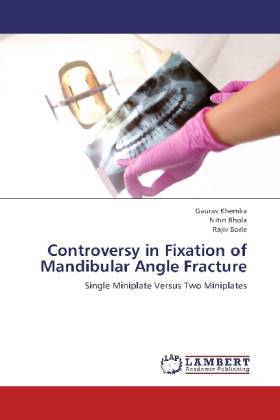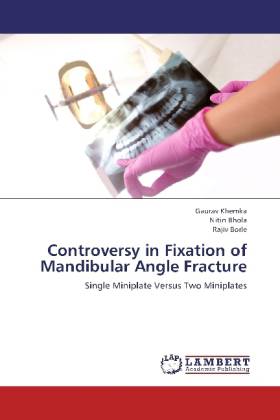
- Afhalen na 1 uur in een winkel met voorraad
- Gratis thuislevering in België vanaf € 30
- Ruim aanbod met 7 miljoen producten
- Afhalen na 1 uur in een winkel met voorraad
- Gratis thuislevering in België vanaf € 30
- Ruim aanbod met 7 miljoen producten
Zoeken
Controversy in Fixation of Mandibular Angle Fracture
Single Miniplate Versus Two Miniplates
Gaurav Khemka, Nitin Bhola, Rajiv Borle
Paperback | Engels
€ 65,45
+ 130 punten
Omschrijving
When mandibular fractures are considered, the primary goal of treatment is to achieve stable and functional occlusion with minimum postoperative complications or infections. Mandibular angle fractures owing to their highest postsurgical complication rates require a meticulous management based on sound surgical principles. Even today, the controversy still ranges between the use of single miniplate and two miniplates for the treatment of mandibular angle fracture. However each of these has its own merits and demerits over the other. The present study was thus conducted to compare these two treatment modalities for the treatment of mandibular angle fracture. Through the observations and results of this clinical trial we would like to conclude that single miniplate is a reliable and safe procedure in treating unfavourable mandibular angle fracture. Addition of one more plate at the lower border doesnot offers any additional advantage over single miniplate but increases the postoperative morbidity in terms of pain,trismus and infection.
Specificaties
Betrokkenen
- Auteur(s):
- Uitgeverij:
Inhoud
- Aantal bladzijden:
- 80
- Taal:
- Engels
Eigenschappen
- Productcode (EAN):
- 9783846598689
- Verschijningsdatum:
- 31/12/2012
- Uitvoering:
- Paperback
- Afmetingen:
- 150 mm x 220 mm
- Gewicht:
- 127 g

Alleen bij Standaard Boekhandel
+ 130 punten op je klantenkaart van Standaard Boekhandel
Beoordelingen
We publiceren alleen reviews die voldoen aan de voorwaarden voor reviews. Bekijk onze voorwaarden voor reviews.








